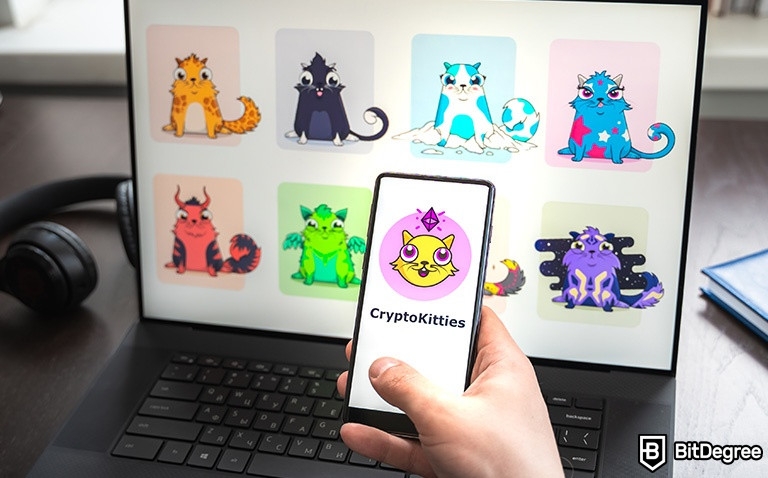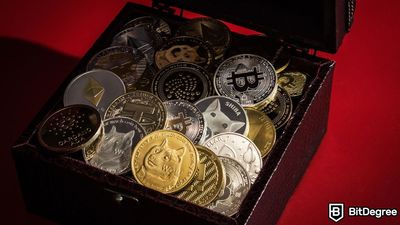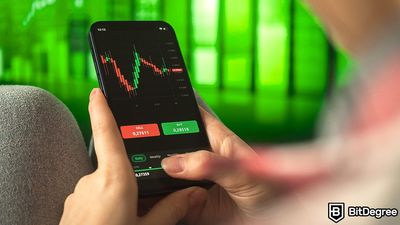Free Airdrop Season 7 is LIVE! Answer fun questions or do simple tasks to earn rewards from the $30K BitDegree prize pool. Participate Now ! 🔥
NFTs are surely a hot topic these days. Everyone’s looking to get into them - some people want to invest into non-fungible tokens, while others might be looking to start creating some high-end crypto art, too! If you fall into the latter camp of individuals, you will need to learn how to sell NFTs.
If you’d like to sell NFTs, though, you will first need to figure out how to create them, too. Thankfully, this isn’t a difficult process to go through, especially if you’re using a top-rated NFT marketplace, such as OpenSea or Binance NFT!
Creation and sales go hand-in-hand, at least as far as NFTs are concerned. This is why, in this article, we’ll be covering both processes, in an in-depth manner. We’ll take things slow, and start approaching the topic from afar - if you’re already proficient with crypto, in the general sense, you can skip through some sections until you find the one that’s relevant to you.

Did you know?
Subscribe - We publish new crypto explainer videos every week!
What is a Bitcoin & How Does it work? (Animated Explainer)
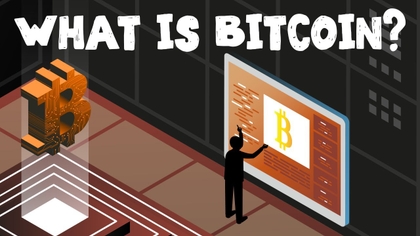

Table of Contents
- 1. Why Should You Create and Sell NFTs?
- 1.1. An Outlet for Artists
- 1.2. A Booming Market
- 1.3. An Entryway Into the World of Crypto
- 1.4. Future Potential?
- 2. How to Sell NFTs: A Step-by-Step Guide
- 2.1. Step 1: Buy Ether (ETH)
- 2.2. Step 2: Two Wallets are Better Than One
- 2.3. Step 3: Transfer Your Ether to a Wallet
- 2.4. Step 4: NFT Marketplaces and The Creation of the Tokens
- 2.5. Step 5: Marketing and Selling Your NFTs, Earning Royalties
- 3. What NFTs Should You Sell?
- 4. Conclusions
Why Should You Create and Sell NFTs?
Evidently, if you have your own reasons for why you’d want to sell NFTs, this question is quite irrelevant to you. However, if you’re still not sure if this is an activity that you’d like to partake in, allow me to elaborate on some potential benefits that you could receive from creating and selling your own non-fungible tokens.
Latest Deal Active Right Now:Head to BitDegree Missions, gather as many Bits as possible & claim your stake of the $30,000 Prize Pool! Don't waste your time & start collecting Bits by completing Missions and referring friends.
An Outlet for Artists
Probably the most obvious benefit of creating and selling your own NFTs is that you receive full control of your work, as an artist. It’s the biggest reason behind the immense popularity and growth of the NFT market - artists being able to take the financial part of their artwork into their own hands.
Traditionally, no matter where you might host your work, there will always be contracts obliging you to pay a huge cut or royalty to the third-party promoter or host. This has been so for the longest time now, and non-fungible tokens brought a completely fresh gust of wind to the industry.
In the same way how cryptocurrencies allow you to transact with another person or party without a middleman - say, a bank -, NFTs allow you to host your art on a decentralized platform, and receive most of the royalties from your sales.

Naturally, when you sell NFTs, a cut goes to the host marketplace, and you do also have to pay gas fees, as well (most of the time). However, this is nothing compared to how the traditional model works.
So, in short, the resume here is this - if you’re a digital artist who’s hustling to get their work out there, for the world to see, NFTs are probably one of the best gateways to do so, as of now. Once you learn “where can I sell my digital art?”, you’ll be able to start creating your crypto artist’s profile, and selling your work to the large groups of crypto enthusiasts out there!
A Booming Market
It’s probably of no secret that the NFT market has been a true phenomenon within the crypto industry. Out of all of the different sections of the crypto world (DeFi, yield farms, cross-chain projects, etc.), NFTs have been the ones that have attracted the most media attention.
It’s no wonder, either. With news of different art pieces and digital collectibles being sold for astonishing prices circulating the internet every single day, it’s no wonder that a huge number of people have developed an interest in the field, and that a portion of them want to sell NFTs, as well.
What I’m aiming at is this - the NFT market isn’t only a great place to kick-start your digital art career exposure (or extend an already-existing one), but to also potentially make some money while you’re at it, too.
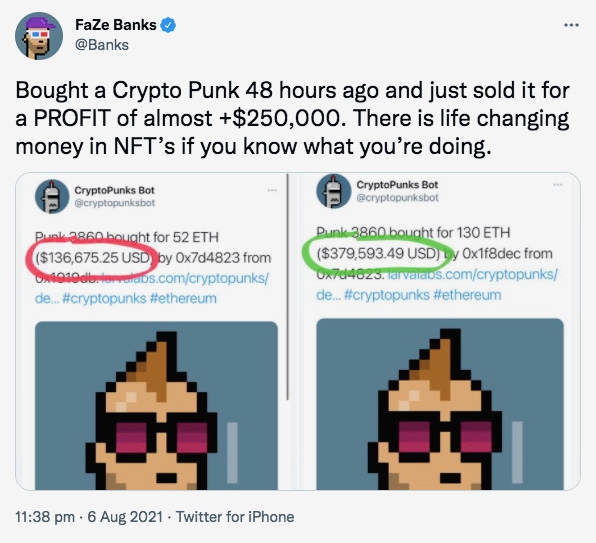
Naturally, there are many more details involved in the entire process - that’s for sure. In order to make any amount of money doing NFT business, you’ll need to both market yourself properly, and also have a bit of luck, as well (due to the over-saturation of the market).
That said, one thing’s for sure - if you create unique art, or have a passion and proclivity for some other aspect that relates to NFTs, you can rest assured that your work will attract some attention in the crypto world. Besides, there are different marketplaces that aren’t as broad in their reach, and instead, target specific types of non-fungible tokens, and their creators.
An Entryway Into the World of Crypto
Cryptocurrencies can be a confusing topic to comprehend and get into - that’s for sure. While they are slowly becoming more approachable to the general public, as of now, there’s still a lot of gatekeeping and complex processes involved.
Believe it or not, but NFTs are truly an amazing tool for some people to get acquainted with crypto, and to start exploring this topic in a deeper sense.
As you will see in a minute, in order to create and sell NFTs, you need to deal with cryptocurrency wallets, specific crypto coins, wallet and marketplace connections, crypto-based transactions, and so on. This is a lot of crypto-related stuff to go through!

You might go as far as to say that, once you’re proficient with selling NFTs, you’ll also have a pretty good idea of how blockchains work, and what’s the actual deal with crypto, in general. Non-fungible tokens can serve as a launchpad to your crypto journey!
The best part? NFTs can attract the attention of people who would have never even heard about crypto, in the first place, or who might think that this is a topic that’s way too complicated for them to get into.
Future Potential?
While there are quite a few additional reasons why you might want to learn how to create and sell NFTs, this is another major point that’s worth mentioning in this article, too.
A single look online will show you that there’s a million different predictions on what the future holds for the NFT market. Some people are a bit more skeptical, and point out that we’re currently in a huge bubble that’s eventually going to burst, with the prices of most NFTs crashing down completely.
However, there’s an even bigger crowd of individuals who are a bit more enthusiastic about the future. They’d point you in the direction of utility-based NFTs.
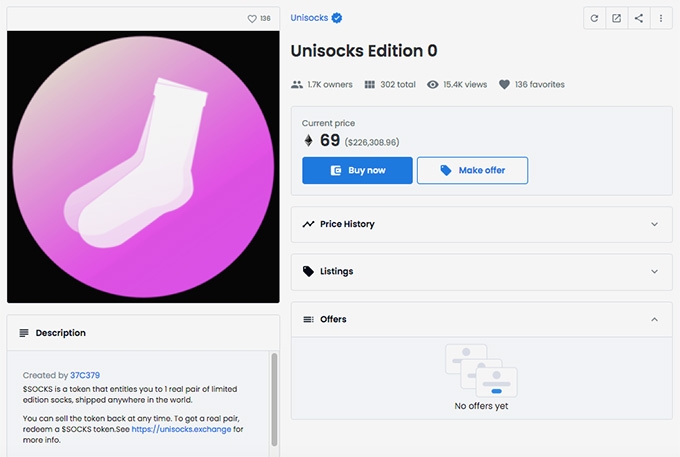
To be a bit more specific, there are NFT creators out there that are looking at how to sell NFTs because they are creating functional tokens that actually serve full-on utility services. Concert tickets, VIP bundles, and other tangible benefit-possessing tokens are seen as the future of the space. While not “being there” yet, the trends are already showing!
Once you learn “where can I sell my digital art”, you might become motivated to create additional, functional NFTs, as well. Doing so, you might be able to secure your place in the NFT world, long-term, and become one of the better-known names in the industry.
How to Sell NFTs: A Step-by-Step Guide
So - now that we’ve discussed the main reasons for why someone would want to create and sell NFTs, we can move on to discussing the actual steps involved with the whole aforementioned process.

Did you know?
Subscribe - We publish new crypto explainer videos every week!
Crypto Day Trading VS Swapping: What’s More Rewarding? (Animated)
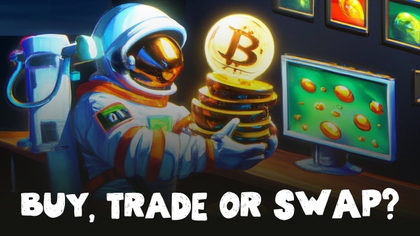

Step 1: Buy Ether (ETH)
A few steps of the process of learning how to sell NFTs will be very similar to buying them, too. It starts out in the same manner - the very first thing that you’ll want to do is register on an exchange platform, and buy yourself some Ether.
Let’s take it from the top, and focus on the exchange part.
Cryptocurrency exchanges are platforms that allow you to buy and trade different crypto coins. You can trade one coin for another, or purchase cryptocurrencies for fiat money.
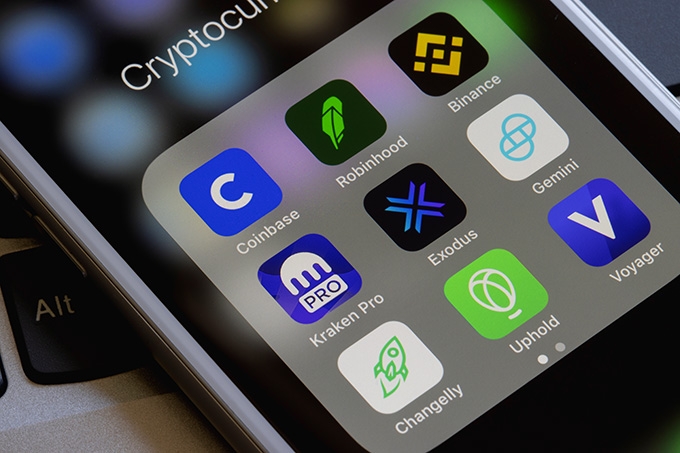
There are two types of exchanges that are currently popular on the market - centralized, and decentralized ones. For the sake of keeping things simple, we’ll be focusing on the former.
If you want to sell NFTs, you will need to first register on a centralized exchange, and pass the KYC verification process. This is all standard procedure - you’ll be asked to provide your ID information, in order for the exchange to be sure who’s trading on their platform.
Now then, the big question - which exchange should you be using?
While there are plenty of different options to pick from (all of which are going to have their own pros and cons), my suggestion is that you’d point your attention to Binance. Among other reasons, this is because the platform is the most well-known and respected crypto exchange in the industry.
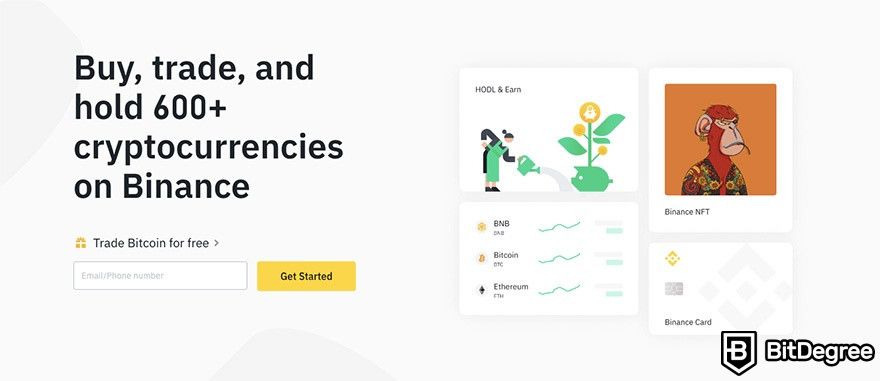
Binance makes crypto trading exceptionally simple and straightforward. You don’t need to possess any prior knowledge or experience in the field in order to start trading coins on the platform. The process is going to be quick, and Binance makes sure to guide you all the way through it.
Once you’ve created an account on Binance, and funded it (this can be done via a credit or debit card, or a bank transfer), you will then need to purchase Ether. This is the second most popular cryptocurrency on the market, right after Bitcoin.
Why Ether? Well, almost all of the NFT marketplaces are built on the Ethereum blockchain, and require Ether in order to perform any sort of transactions. Most NFTs are also created as ERC-721 or ERC-1155 (an improved version of the former) tokens. Thus, Ether is crucial if you want to sell NFTs.
Step 2: Two Wallets are Better Than One
Once you have your Ether purchased, you will then need to create (or purchase) a cryptocurrency wallet in which you could store those ETH coins.
Well, to be frank with you, if you’re planning on selling NFTs for a long time to come, and if you’re serious about it, you will actually need two wallets - more-specifically, a MetaMask software wallet, and a hardware wallet, such as the Ledger Nano X.
While the “why” can get a bit convoluted, allow me to explain.
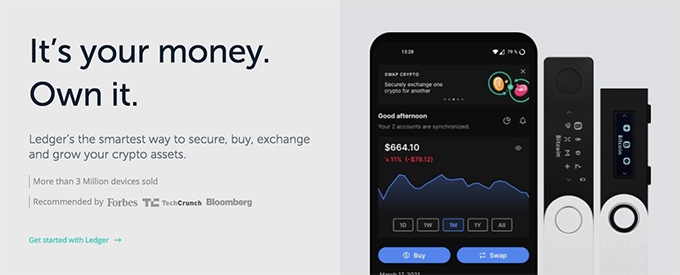
The Ledger Nano X (same as some other wallets that support NFTs) allows you to store non-fungible tokens in them, but lacks the visual representation interface - in other words, you won’t be able to see your NFTs on Ledger Live. Following that, many NFT marketplace that allows you to sell NFTs won’t have the option for you to connect Ledger to them.
Instead, you will be asked to connect a different, “hot” wallet - this is where MetaMask comes in.
MetaMask and Ledger share some synergy - once you have the former wallet configured and set up, you will then be able to connect your Ledger Nano X to it, too. This will allow you to use the MetaMask interface, and manage your tokens and crypto coins there, while still possessing the security element of Ledger.

Again - while it may seem a bit confusing, just know this: in order to sell NFTs in an efficient and worry-free manner, you will need two wallets, and your best bets are MetaMask and the Ledger Nano X.
MetaMask is also completely free to download and use. The Nano X, on the other hand, will cost some money - it being one of the best hardware wallets on the market, though, it’s definitely a worthwhile investment, for sure.
Once you have that sorted out, you should then transfer your Ether from Binance to one of the wallets.
Step 3: Transfer Your Ether to a Wallet
Transferring your newly-acquired Ether coins from the exchange to your wallet is a rather straightforward process. It’s almost exactly the same as if you were transferring crypto coins to a friend’s wallet.
In your Binance account (or any other exchange that you might be using - this process is extremely similar with most platforms), go to your Ether wallet, and select the option to withdraw the coins. You will then be prompted to enter the receiving wallet address.
Once you enter that, double- and triple-check if these addresses match on both interfaces (the exchange, and your own wallet), and once you’re sure, press “Send”. Depending on the congestion of the network, the transaction should be complete in a few minutes.
While all of this might seem somewhat trivial, these are actually processes that you will be partaking in rather frequently, when looking to sell NFTs. This is why it’s important to get it down and figured out beforehand!
Step 4: NFT Marketplaces and The Creation of the Tokens
After a long journey, we’re finally here - you are almost ready to sell NFTs, and become the next big name in this industry!
All that’s left to do now is to create the actual NFT. If you’re wondering “where can I sell my digital art?”, I have two words for you - NFT marketplaces. And, in this realm, OpenSea stands tall above them all.
While that may sound overly dramatic, OpenSea is the first NFT marketplace that was created - since then, it has managed to amass over 19,5 million NFTs, and counting. The platform is the go-to place for anyone who wants to both buy and sell NFTs, due to its popularity and simplicity. It’s like the Amazon of non-fungible tokens!

The simplicity part is very notable here, as well. As mentioned a few times in this article already, in order to sell NFTs, you will first need to create them - this is done on the NFT marketplaces themselves. With OpenSea, the process is as simple as they come.
Talk is cheap, though. Let’s get to the actual creation process itself.
First, you need to go to OpenSea’s official website, and connect your MetaMask wallet. You can do this by navigating to the top-right corner of the screen, and choosing MetaMask from the wallet list.
Once you do so, you will have technically created your account. This is represented by your wallet address. Now, you should head to the top of the screen, and navigate to your collections tab - this is where all of your NFT creating process will happen.
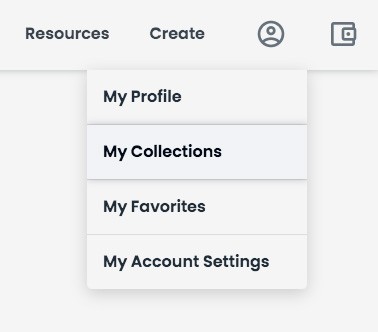
First, you need to create a collection - pick the appropriate blockchain, choose the name, etc. Once that’s done, you will be able to add (create) NFTs to (on) that collection.
The process is, again, extremely simple and straightforward. You upload your files in one of the supported formats (.jpeg, .png, .gif, and so on), choose their properties, select your royalties, fees, add links, adjust some additional information, and that’s it - your NFT is ready to be minted! In order to sell NFTs, this is frankly the last step you need to partake in - at least marketplace-wise.
The minting process happens on the blockchain. During it, the token itself is created, and its information is being ‘minted’ on the blockchain. It’s the same as with a book that’s being published, during the page and cover material assembly process.
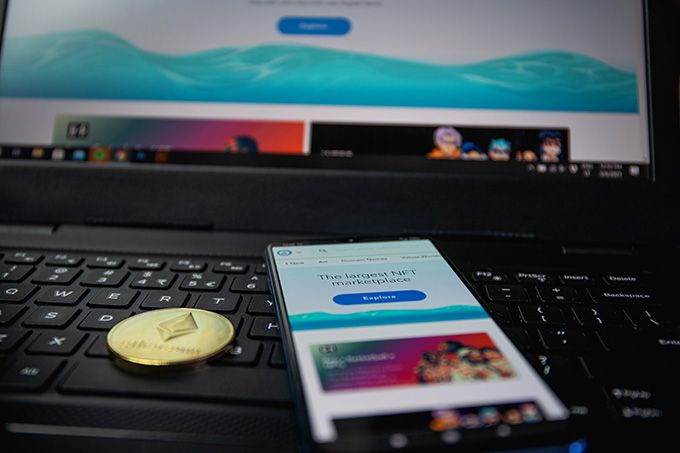
In order to mint and sell your NFT, though, you will need to pay Ethereum gas fees. These fees are going to depend on the time period during which you’re creating your non-fungible tokens, and can vary drastically. It’s thus a good idea to try and time the market, when the fees are at their low.
Admittedly, if you do decide to use OpenSea in order to sell NFTs, the platform has something known as “lazy minting”. This is a process where you postpone paying gas fees until someone actually purchases your NFT, and it’s technically not being minted up to that point, either.
The technicalities behind this process are rather complex, and information on how it works exactly isn’t as simple to come by as you would think. Even the guides available on OpenSea are lackluster, to say the least. However, from the user (seller) end of things, all that you need to know is that you can, for a fact, technically create an NFT for free on the site in question.

- Secure and reliable
- Accepts fiat currencies
- Lots of trading options
- Reputable exchange
- Accepts fiat currencies
- Offers various trading options

- Fiat currencies - accepted
- Simple to use
- Accepts only the most trustworthy cryptocurrencies
- A leading cryptocurrency exchange platform
- Best for beginner investors
- Accepts fiat currencies

- Fully reserved and transparent
- Multiple tradable asset classes
- Over 300 supported cryptos
- Over 300 cryptocurrencies
- Secure & transparent
- Fully reserved
Step 5: Marketing and Selling Your NFTs, Earning Royalties
Once you go through all of the minting processes, that’s basically it - you have your NFT created, and are ready to start selling!
It’s worth keeping in mind that this is actually just the beginning of the entire ordeal, though. While it may feel great having created your first NFT, with over 80 million different tokens accessible on OpenSea, yours can get lost in the crowd, pretty fast (other well-known marketplaces aren’t all that different in this regard, either).
This is why, in order to be successful and sell NFTs to as many people as possible, you will need to be smart about your marketing, as well!
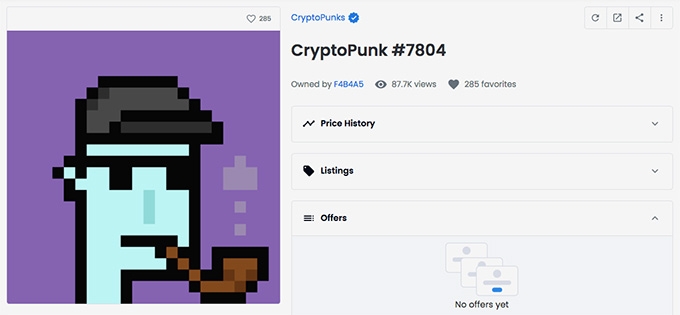
If you’re already a well-established artist with a decently-sized following, this may not be all that big of an issue. If you’re just starting out, though, and NFTs are your first entry into the online art market, it can be difficult!
Social media presence and being a respected online personality are surely among the biggest aspects that can help you market your NFTs. However, you also need to have industry knowledge, as well - without it, it can be difficult to implement effective marketing strategies! Some initial funds will help out, for sure - the more money you're prepared to throw at marketing your project, the more people will likely see it.
Lastly, a sharp tongue and the ability to communicate your idea clearly and in an interesting way will surely add to the charm, quite a bit. If you have an amazing NFT, and are able to present it in a super-interesting way, it'll be *that* much more appealing to potential buyers and collectors!
That aside, once you do publish your newly-minted NFT, there aren’t really any further steps that you’d need to take on the marketplace itself. Whenever a purchase is made and confirmed, you will receive funds to your crypto wallet, minus the sales fee taken by OpenSea (or any other marketplace).
That’s it! You now know how to sell NFTs!
What NFTs Should You Sell?
Even if you already know what type of NFTs it is that you want to sell, a single look at the market might make you wonder - what are some of the most popular NFTs that attract the most attention, and have the biggest ETH volume?
Evidently, if you’re a digital artist, most of the popular NFT categories are your oyster. Meaning, you aren’t really limited to creating NFT artwork, and selling it on marketplaces such as SuperRare or Foundation - instead, you could also create visual game assets, collectibles, trading cards, and more!
This is why, before you actually do sell NFTs, it’s worth doing some in-depth market research, and checking out what the popular trends are, at this point in time.

Glancing at the top-scoring Ethereum NFTs on OpenSea, the idea is pretty clear - collectible artwork, especially characters, rule the market. Whether it be CryptoPunks or CryptoKitties, apart from some digital game world collectibles (and in-game NFT items), artwork is still king.
This is great news if you’re looking at “where can I sell my digital art?”! This is why the NFT space, in general, is considered to be such a haven for artists from all around the world, and why you'll hear the term "WAGMI" (we're all going to make it) being thrown around. Whether you love creating characters for a fictional universe, or drawing complex universes themselves, both concepts should find their spot in the world of NFTs!
At the same time, it’s worth keeping in mind that utility-powered NFTs are becoming increasingly more popular, as well. These tokens are considered to be the future of the NFT market, as a whole! Today, in the utility section, you’ll find things such as VIP concert tickets and music albums with hidden content in them. However, as time goes on, the list of use cases for such NFTs is only getting bigger.
Conclusions
Selling NFTs can seem like a complicated process if you’ve never looked into it before, but once you start breaking it down step by step, it’s evident that things aren’t all that difficult. This is exactly what we’ve tried doing in this article, too - I hope that you’ve managed to catch all of the important points along the way!
Remember - it’s not worth learning how to sell NFTs if you’re not going to possess a top-tier wallet to keep those NFTs (or profits) in. If you want to save yourself the potential headache from sorting through a huge number of lists of different wallet options, I can tell you right now - you can go wrong if you were to use MetaMask and the Ledger Nano X hardware wallet.

|
|
|---|---|
| Hardware | |
| Safely Storing, Sending, and Receiving Different Cryptocurrencies | |
| All Ledger Nano X Coupons | |
| One of the best hardware cryptocurrency wallets ever made. | |
|
Visit site
Read review |
Table: Information about the general aspects of the Ledger Nano X hardware wallet
Following that, your marketplace of choice is going to be important, as well. There are many different topic-specific markets on the internet, but your best choice if you’re just starting out (and if you don’t want to limit yourself, too) is OpenSea. It’s a veteran NFT marketplace with a huge variety of features, and an emphasis on simplicity and ease of use.
If you’re not certain which NFT markets are going to be best for you, or if you’re still unsure whether or not you need Ledger’s hardware wallet services, make sure to take some time and research the market thoroughly. Explore all of the potential options, and find one that will suit your needs best!
All of that being said, I’d like to thank you for reading this article on how to sell NFTs, and wish you the best of luck with your digital artwork business! Until next time!
The content published on this website is not aimed to give any kind of financial, investment, trading, or any other form of advice. BitDegree.org does not endorse or suggest you to buy, sell or hold any kind of cryptocurrency. Before making financial investment decisions, do consult your financial advisor.

